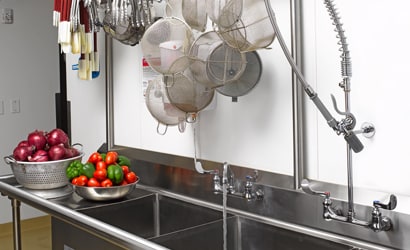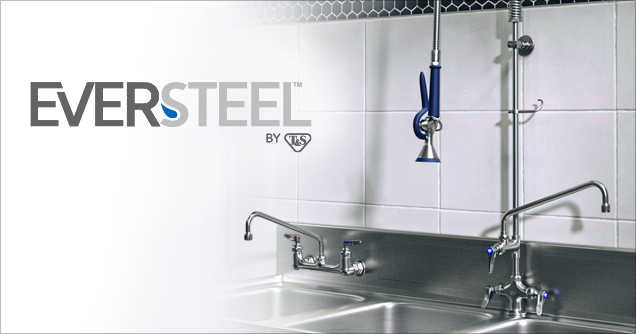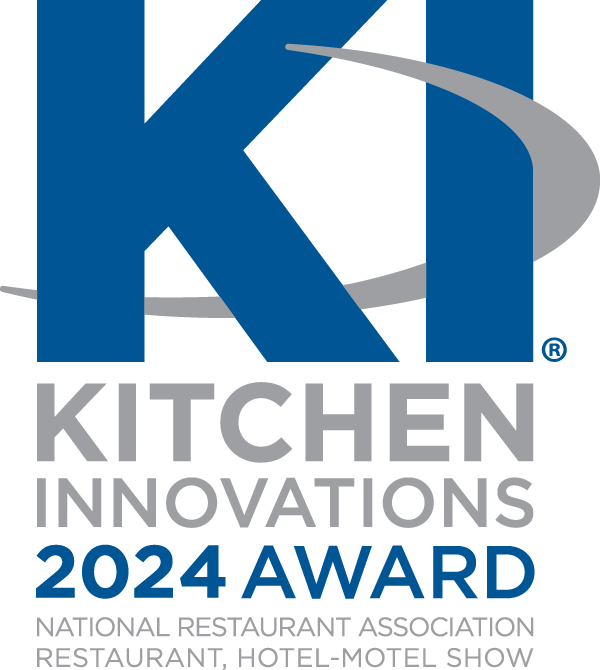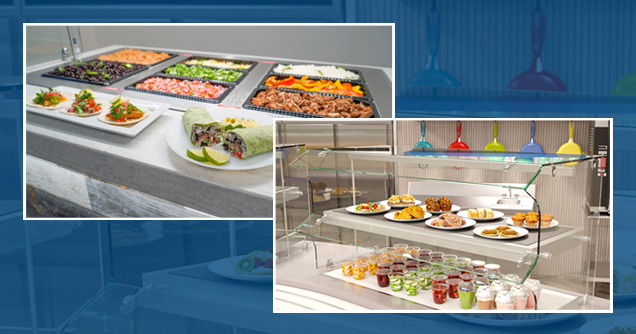
When it comes to designing and specifying commercial kitchens, a sink isn’t a sink isn’t a sink. How the sink will be used is the primary driver in determining what tools will be needed and the features and elements that should be included for optimal performance.
The day-to-day needs of a hardworking three-compartment sink are dramatically different from the those of a hand sink or mop sink. And the potential challenge these applications’ plumbing fixtures can face mean it’s critical to understand and specify the proper components.
Three-compartment sink
Three-compartment sinks are often the workhorses of the kitchen, handling washing, rinsing, sanitizing, thawing and more, so the selected plumbing fixtures need to provide the flexibility and durability to get it all done.
The most common primary fixture is a pre-rinse unit with add-on faucet, but consider these additional components from T&S Brass to improve performance:
- Pre-rinse swivel: Provides 360-degree rotation of the spray valve and reduces stress on the hose and the operator
- Accessory tee: Correctly introduces water to a chemical dispensing system for cleaning or sanitizing and prevents voiding the warranty from the user cutting into the riser for a post-installation retrofit
- Ceramic cartridges: Able to withstand the hotter water temperatures, up to 185 F, often used in these sinks
- Stainless steel waste drain valve: Designed to withstand chemical erosion
Dish sink
Dish sinks are used exclusively for pre-rinsing and don’t require add-on faucets or accessory tees for their pre-rinse units. But components like the pre-rinse swivel and ceramic cartridges specified in three-compartment sinks are also beneficial here. One other component in particular can protect the long-term durability of these heavily used units.
- Wall bracket: Secures riser to the wall to add support and reduce wear and tear on the connection between the base and the riser, reducing the potential for leaks to develop
Prep sink
Prep sinks are often the chameleon of the commercial kitchen, taking on a variety of uses depending on the needs and workflow of the kitchen, so the sink’s faucet should include the best flexibility and functionality right from the start. Specifying these components ensures optimal performance no matter the task:
- Swivel base and nozzle: Allows the faucet to be moved side to side (or out of the way) for various tasks
- Aerators: While prep sinks are occasionally used for water fill, many tasks don’t require full flow, making a 1.5 GPM aerator a good balance of performance and efficiency
- Correctly sized nozzle: Be sure to select a nozzle length that reaches the middle of the sink
Hand sink
Research on food safety continues to support the importance of hand hygiene in preventing foodborne illnesses, and research also shows that the location and performance of the hand sinks themselves play a pivotal role. Hand sinks that are easy to access tend to increase the likelihood the workers wash their hands more frequently.
To support the highest functioning, easy-to-use hand sinks, consider the following options:
- T&S Brass’ updated B-1100 series offers improved performance for a classic handwashing fixture, including replacing spindle assemblies with cartridges and featuring standard 2.2 GPM aerators (with lower-flow aerators also available).
- Hands-free sensor faucets combine water savings — up to a gallon for every hand wash — with the hygiene benefit of not having a handle that could recontaminate cleaned hands
Mop sink
Mop (or service) sinks provide custodial or maintenance staff with dedicated access to water. They are often at particular risk for crossflow of water when a hose is connected to the faucet and the valve left on for convenience. Checks are a critical safety component to prevent this issue. T&S faucets feature incorporated checks — spring checks in Eterna cartridges and integral check valves in Cerama cartridges — to prevent the need to specify the part separately or retrofit it later if problems arise.
Whether you’re specifying for a high-volume institutional kitchen or a new restaurant down the street, T&S Brass has the products and the expertise to help ensure every kitchen is ready to perform efficiently, safely and reliably.
Further details:
Please click here for more information.




